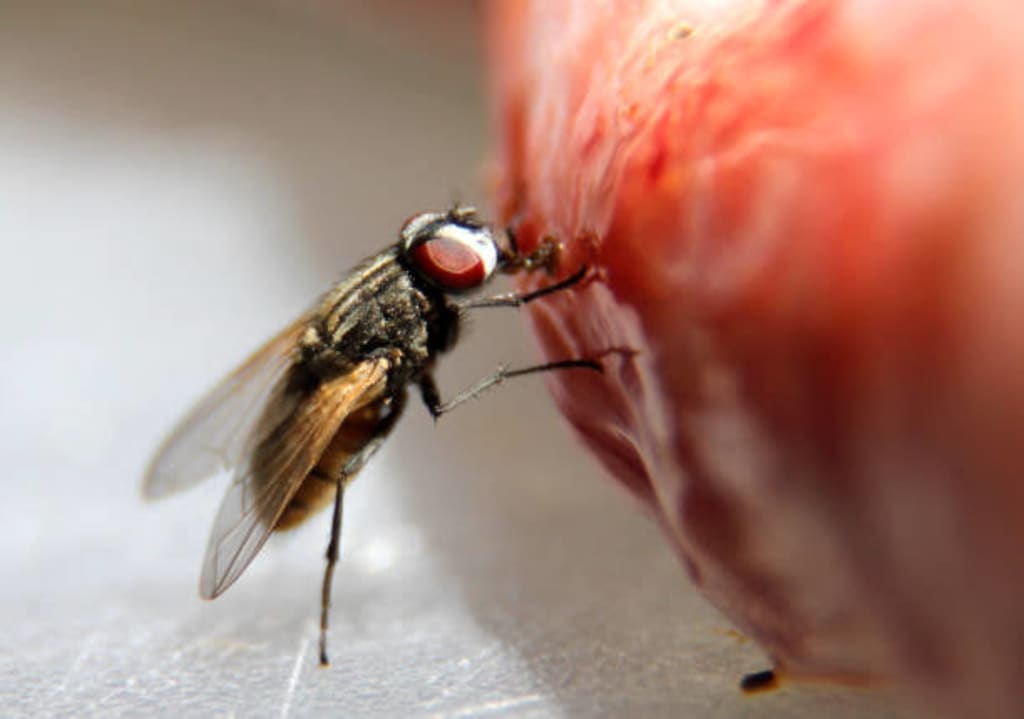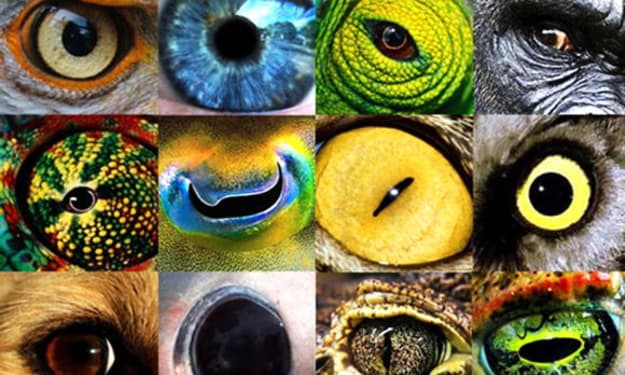What Flies Really Do When They Land on Food
Exploring the Remarkable Traits, Behaviors, and Hidden Roles of These Tiny Insects

Flies, ubiquitous and often overlooked, are a testament to the adaptability of life itself. Originating in Asia, these tiny creatures have become global citizens, with a presence only absent from Antarctica and a few isolated islands. Their journey across oceans mirrors our own, as they've followed humans, forming an intimate relationship with our civilization. The wild and desolate regions untouched by human presence remain their unconquered territory.
However, the question lingers in our minds: why do flies rub their limbs? The answer, surprisingly simple, lies in cleanliness. These small insects are equipped with hair that covers their bodies, with limbs serving as sensory tools for flight, finding sustenance, and all fly-related activities. To function optimally, they engage in constant limb-cleaning, maintaining sensitivity. Intriguingly, these limbs also function as taste receptors, allowing flies to literally "taste" with their feet. When landing on a potential meal, they wander around, sampling the flavor before indulging. Incapable of chewing, flies rely on an all-liquid diet and regurgitate digestive enzymes to liquefy solid food, ensuring their nutritional intake.
Flies, often seen as mere annoyances, have a darker side. Their limbs, unwittingly smeared with germs and microbes from the unsavory locations they frequent, transfer these pathogens to our food. A fly's seemingly innocent landing could introduce disease-causing agents like cholera and typhoid. An experiment involving spices and rice vividly demonstrated this risk, urging us to shield our meals from these uninvited guests. While swift action in swatting them away is prudent, there's no need to abandon a meal that has endured a brief encounter with a fly.
Despite their unsavory reputation, flies play a vital role in ecosystems. They pollinate flowers by collecting nectar, inadvertently transferring pollen from one bloom to another. Moreover, flies contribute to waste decomposition, a pivotal function in maintaining our planet's health. They also form an essential link in the food chain, providing sustenance for various creatures like birds, spiders, and frogs. Without them, the delicate balance of ecosystems would falter.
Beyond their role as pollinators and decomposers, flies exhibit a range of remarkable traits. Their ability to walk on vertical and even inverted surfaces owes itself to microscopic hair-covered pads that secrete a glue-like substance. Flies possess unique eyes, composed of thousands of simpler ones. Their unchanging gaze encompasses nearly 360 degrees, granting them a panoramic perspective. Additional simple eyes on their foreheads act as a compass, aiding navigation. Flies perceive the world in slow motion, allowing them to evade our sluggish swats.
A fly's flight is equally intriguing. Equipped with a single set of wings, they possess halters that aid takeoff and balance during flight. A missing halter leads to disorientation, potentially rendering them flightless. Despite beating their wings up to a thousand times per minute, their actual speed is modest, reaching only 4.5 miles per hour. Urban flies are homebodies, rarely straying far from their habitat, while their rural counterparts explore distances of up to seven miles.
In the short span of their lives, flies contribute significantly to population growth, laying hundreds of eggs. These eggs mature rapidly, undergoing metamorphosis in a week, culminating in the emergence of adult flies. The largest fly species, the Timber fly, resides in Central and South America, growing up to an astonishing 3.15 inches. Flies have preferred resting spots, located near their food sources, where they retire at night.
Managing fly populations requires understanding their attractions. They're drawn to their kind and the scent of their presence, guided by an acute sense of smell. Rotting produce and garbage serve as breeding grounds, emphasizing the importance of proper food storage and waste disposal. Flies' affinity for sweetness, facilitated by their taste receptors, makes sugary substances, syrups, and beverages prime attractions. Moreover, these insects thrive in damp, unclean environments, harboring in drains and crevices. Sealing entry points and maintaining cleanliness curbs their ingress.
In conclusion, flies transcend their reputation as mere pests to unveil a world of intriguing adaptations and ecological significance. Their behaviors, senses, and survival strategies intertwine with our lives in unexpected ways. They serve as nature's custodians, decomposing waste and facilitating pollination. Despite their status as disease vectors, flies also reflect the resilience of life and the complexity of natural systems. Understanding their role can inspire a new appreciation for these tiny creatures that share our world.
Watch video on YouTube @brightside






Comments
There are no comments for this story
Be the first to respond and start the conversation.